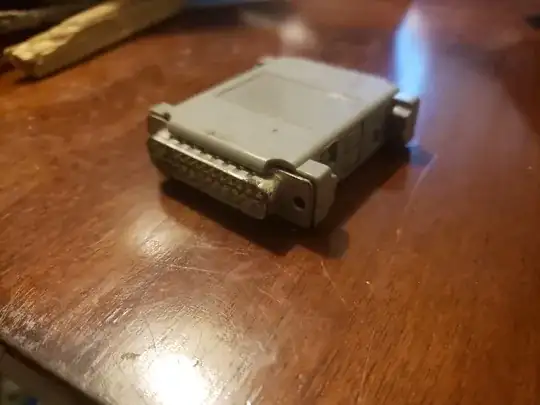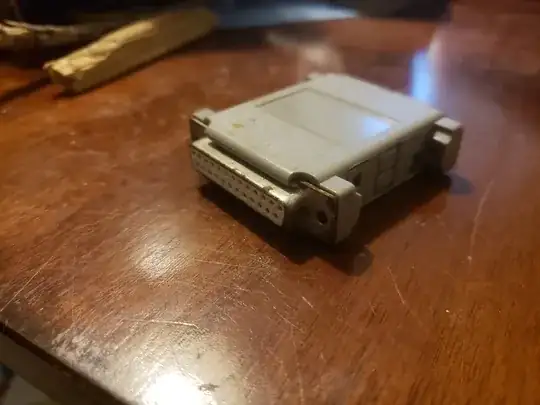Is this a parallel port dongle that's required to run certain old software (w/out modification)? If so, how do I determine for what software or publisher it is for, assuming it is possible to do so?



Is this a parallel port dongle that's required to run certain old software (w/out modification)? If so, how do I determine for what software or publisher it is for, assuming it is possible to do so?



Is this a parallel port dongle that's required to run certain old software (w/out modification)?
That's certainly what it looks like. The use of potting epoxy (in the third picture) is a strong indicator that the manufacturer of this device was trying to prevent reverse engineering -- I wouldn't expect to see that in a simple adapter, for instance.
If so, how do I determine for what software or publisher it is for, assuming it is possible to do so?
This is unlikely to be feasible. The way that these dongles operated was (intentionally!) nonstandard and obscure. If you were able to identify how this specific one operated and read data from it, it's possible that it might contain data identifying the software which it applied to -- but this would be a significant hardware reverse-engineering effort, and might still turn up nothing if the dongle doesn't contain any stored data, or if the manufacturer didn't embed any obvious identifiers in that data.
I seriously doubt you could figure out what it's for. I've written for such things before--we did not manufacture them, we bought them from the companies that do. There was absolutely nothing about the outside that indicated they were ours. We were small enough we didn't print special labeling for them.
The only way to figure out what they were was to try to talk to them. Provide the right key and they would answer. Our name didn't even appear internally, the only way to figure out whose they were would be the company that made them--they would know the contact information associated with the ID burned into the key.
I've got something identical to this knocking about somewhere, but it was for, ahem, circumventing copyright protection back in the day. It worked with software called Synchro Express (version 2 point Zero, Copyright Coast To Coast Technology, All Rights Reserved) on the Amiga.
You plugged a second floppy drive into it and it allegedly enabled the user to copy copy-protected games from DF0: to DF1: by duplicating byte-for-byte. I'm not sure it was ever that successful in reality though.
Rainbow Sentinel Pro and KeyLok were Parallel Port Key dongles I worked with in the 80's. I think there was one called DESLock too but it was a long time ago. These all required you to communicate to them using some sample code provided by the dongle provider (in my case it was some C code which was compiled to .OBJ and linked into a Clipper application).
Without the code, the device is pretty much useless.
Well, I know this device, it's called HARD-LOCK,I'm a designer civil engineer and I used this in 90's to unlock a concrete software calculation and design. It was plugged on parallel port of a PC, I think it works sending some information from the software installed in a PC into hard-lock then hard-lock sends back doing a confirmation that the software has permission to run, different way for Autocad which uses KEYS like Windows to unlock the software.
I used one of these in the 90s on simulation software. The manufacturer was one of the hot-shot crypto companies (don't remember the name). The software would query the dongle once in a while and, if the response was accepted, the software would continue running normally. If the dongle was missing or didn't respond in time, the software would, IIRC, stop or switch to demo mode (deliberately crippled). A line printer could be hooked up to the dongle.